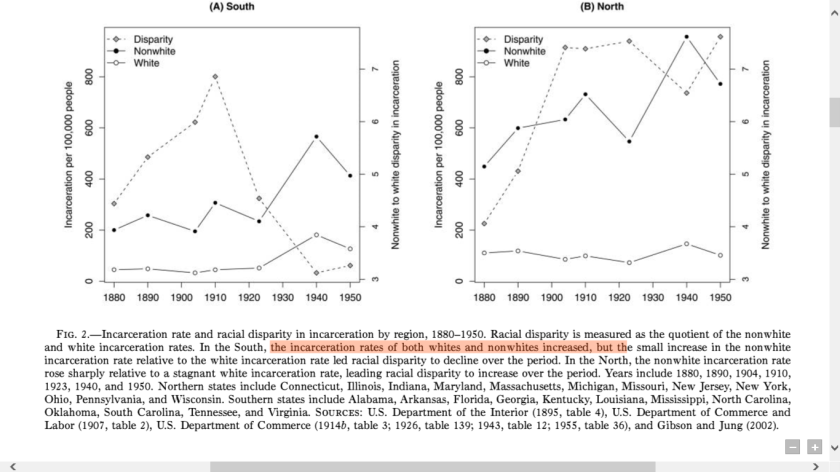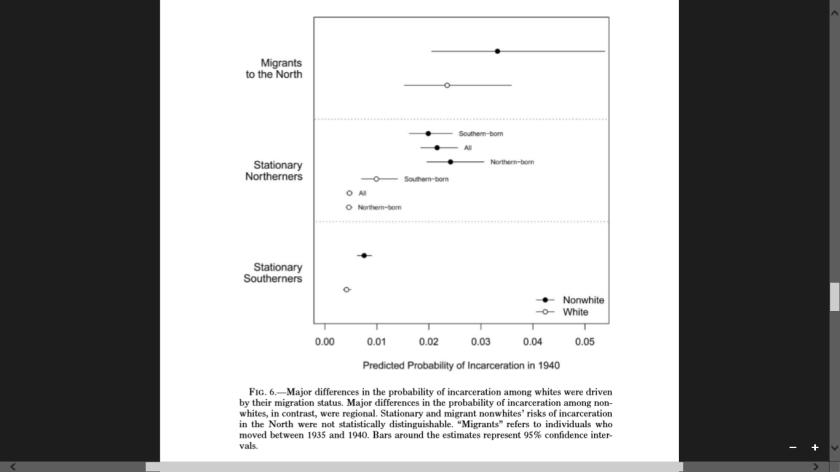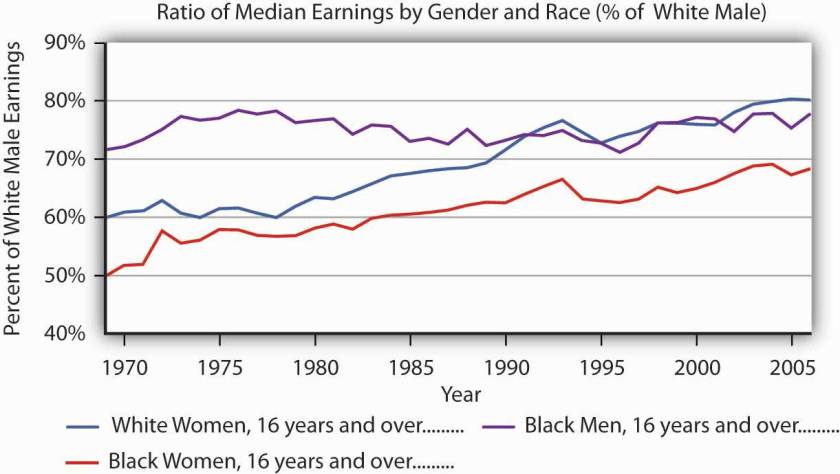Nine days ago, a dude known as Coates wrote another long-ish tirade about his race and its travails. It’s not what you think.
Unlike Coates’ earlier major Atlantic piece, The Case for Reparations, which was trite and totally unnecessary for me to have read, I found this latest piece of Coates fairly awesome. In it, he makes a stirring case for the expansion of the prison state, explaining why the vast majority of those incarcerated today basically deserve it, why Daniel Patrick Moynihan was right about everything except opposing mass incarceration, and why reparations for slavery won’t fix anything -while probably not intending to! Were the good Steve Sailer to have written it, except for some sentences and concluding sections, and, of course, the broader tone and use of examples, the piece would be largely intact.
Choice quotes (all filled with awesome!):
As the civil-rights movement wound down, Moynihan looked out and saw a black population reeling under the effects of 350 years of bondage and plunder. He believed that these effects could be addressed through state action. They were—through the mass incarceration of millions of black people.
In 1984, 70 percent of all parolees successfully completed their term without arrest and were granted full freedom. In 1996, only 44 percent did. As of 2013, 33 percent do.
The carceral state has, in effect, become a credentialing institution as significant as the military, public schools, or universities—but the credentialing that prison or jail offers is negative.
Deindustrialization had presented an employment problem for America’s poor and working class of all races.
“Roughly half of today’s prison inmates are functionally illiterate,”
Kelly Miller, who was then a leading black intellectual and a professor at Howard University, presaged the call for blacks to be “twice as good,” asserting in 1899 that it was not enough for “ninety-five out of every hundred Negroes” to be lawful. “The ninety-five must band themselves together to restrain or suppress the vicious five.”
So even as violent crime declined between 1925 and 1940, Louisiana’s incarceration rate increased by more than 50 percent.
The cure, as Nixon saw it, was not addressing criminogenic conditions, but locking up more people. “Doubling the conviction rate in this country would do far more to cure crime in America than quadrupling the funds for [the] War on Poverty,” he said in 1968.
The justification for resorting to incarceration was the same in 1996 as it was in 1896.
The argument that high crime is the predictable result of a series of oppressive racist policies does not render the victims of those policies bulletproof.
In prison, Odell has repeatedly attempted to gain his G.E.D., failing the test several times. “My previous grade school teacher noted that I should be placed in special education,” Odell wrote in a 2014 letter to his lawyer. “It is unclear what roll childhood lead poisoning played in my analytical capabilities.”
In 2006, Martin O’Malley (who’s currently vying to be the Democrats’ nominee for president in 2016) defeated Ehrlich to become governor, but he took an even stricter stance on lifers than his predecessor, failing to act on even a single recommendation of the Parole Commission.
One of my great irritants is how so much of our discussions on race and racism proceed from the notion that American history begins in the 1960s. The discussions around Detroit is the obvious example. There is a popular narrative which holds that Detroit was a glorious city and the riots ruined it. Thomas J. Sugrue’s The Origins Of the Urban Crisis does a great job at dialing back this idea and pointing to the long arc of the city’s decline.
The fires of 1967 conveniently obscured those perils. But the structural problems, along with the wave of deindustrialization, were what gifted America with the modern “Negro problem.” By the 1970s, the government institution charged with mediating these problems was, in the main, the criminal-justice system.
“African Americans in our data are distinct from both Latinos and whites,” Robert Sampson told me. “Even when we control for marital status and family history of criminality, we still see these strong differences. The compounded deprivation that African Americans experience is a challenge even independent of all the characteristics we think are protective.”
Moynihan’s observation about the insufficiency of civil-rights legislation has been proved largely correct.
“The Negro Family” is a flawed work in part because it is a fundamentally sexist document that promotes the importance not just of family but of patriarchy, arguing that black men should be empowered at the expense of black women.
There is, of course, nothing wrong with discouraging degeneracy by promoting male-headed households.
“It would be difficult to overestimate the degree to which young well educated blacks detest white America.”
Moynihan ominously cited a “rather pronounced revival—in impeccably respectable circles—of the proposition that there is a difference in genetic potential” between the two races.
Crime really did begin to rise during the early 1970s. But by this point, Moynihan had changed. According to the Moynihan of the Nixon era, middle-class blacks were not hardworking Americans attempting to get ahead—they were mobsters demanding protection money in exchange for the safety of America’s cities. And the “unusually self-damaging” black poor were hapless tools, the knife at the throat of blameless white America.
One does not build a safety net for a race of predators. One builds a cage.
In 1900, the black-white incarceration disparity in the North was seven to one —roughly the same disparity that exists today on a national scale.
This statement links to a really interesting article, of which the choice graphs are these:
In 1972, the U.S. incarceration rate was 161 per 100,000—slightly higher than the English and Welsh incarceration rate today (148 per 100,000). To return to that 1972 level, America would have to cut its prison and jail population by some 80 percent. The popular notion that this can largely be accomplished by releasing nonviolent drug offenders is false—as of 2012, 54 percent of all inmates in state prisons had been sentenced for violent offenses.
One 2004 study found that the proportion of “unambiguously low-level drug offenders” could be less than 6 percent in state prisons and less than 2 percent in federal ones.
There is no reason to assume that a smaller correctional system inevitably means a more equitable correctional system. Examining Minnesota’s system, Richard S. Frase, a professor of criminal law at the University of Minnesota, found a state whose relatively sane justice policies give it one of the lowest incarceration rates in the country—and yet whose economic disparities give it one of the worst black-white incarceration ratios in the country.
And so it is not possible to truly reform our justice system without reforming the institutional structures, the communities, and the politics that surround it.
And should crime rates rise again, there is no reason to believe that black people, black communities, black families will not be fed into the great maw again.
The graphs are also informative, and help illustrate Coates’ case, as I’ve put it, well.
There are obviously problematic parts to Coates’ piece -he’s still considers “an autocratic Vladimir Putin” to be the same as Russia’s entire criminal justice system (which is obviously much worse than America’s). Believe me, Russia’s criminal justice system was bad before Putin, is bad today, and will continue to be bad after Putin. Coates’ use of international comparisons is likely specious. According to Coates, Canada’s incarceration rate never strongly changed from 1960 to today. The statistics seem to back him up on this fact.
Canada’s total crime rate seems to have fallen at pretty much the same rate in the 1990s and the 2000s, while the U.S.’s fell faster during the 1990s, when the U.S.’s incarceration rate was still skyrocketing. The sources I’ve found for Canadian violent crime are contradictory. Either Canada’s violent crime rate was always much higher than that of the U.S. and never really fell since its early 1990s peak, and also rose much faster than that in the U.S. during the late 1980s (even while Canada experienced a much milder crack pandemic and decline), when the U.S. incarceration rate was still skyrocketing, or something entirely different happened- Canada’s violent crime rate was always lower than that of the U.S. and experienced pretty much the same trends as that of the U.S., only on a milder scale. I have no clue which to judge as more believable.
Meanwhile, Canada’s homicide rate did not decline as much as in the U.S. during the 1990s and 2000s, while it stayed stable during the 1980s, as in the U.S. Canada offers a useful test case for lack of mass incarceration, leading me to take the claim that increased incarceration is of only minimal importance in explaining the rise and fall of North American crime much more seriously, but it hardly refutes the general point that incarceration reduces crime by taking criminals off the streets.
But perhaps the worst part of it is this ludicrous piece of bullshit:
“There’s very little evidence that it brought down crime—and abundant evidence that it hindered employment for black men, and accelerated the kind of family breakdown that Clinton and Moynihan both lamented.”
-Never mind the dubious claim (which I have not yet researched in depth) that there’s very little evidence mass incarceration brought down crime- Coates cites zero evidence that it has in any way affected “the kind of family breakdown that Clinton and Moynihan both lamented”, much less accelerated it. Most of the collapse of the American Black family took place before American mass incarceration. Most of the collapse of the American White family took place after its beginning. The correct comparison is not between incarcerated men and non-incarcerated men, but incarcerated and non-incarcerated men of similar age and criminal background. In fact, it was during the period 1982-1988 (you have to choose your years wisely here; the 1980-1982 recessions hurt Blacks far more than Whites) that the Black and White male employment/non-incarcerated-population ratios converged most strongly. The most reasonable explanation for the collapse of the Black (and later White) family is contraception and abortion. Yeah, I know, the Catholic Church is right on this one, as is Roissy!
There are, of course, other errors:
“Even in the booming ’90s, when nearly every American demographic group improved its economic position, black men were left out.”
-The common opinion at the time was pleasure that black men (at least, the non-incarcerated ones) weren’t left out during the 1990s. And, indeed, they weren’t:
From 2012books.lardbucket.org/books/microeconomics-principles-v1.0/section_22/09d7330a38081520dc990b7d48d86982.jpg
The claim that “This might well have been true as a description of drug enforcement policies, but it was not true of actual drug abuse: Surveys have repeatedly shown that blacks and whites use drugs at remarkably comparable rates.” is also ridiculous, as anyone who has any basic intuition knows. “Surveys” are unreliable (i.e., they lead to wrong results) and misleading (they ignore the length and pattern of drug use). See the link above in this paragraph!
The claim of “persistent racism” in Detroit (an 80+%-Black city!) and in the rest of America is utter crap, but fairly ignorable tripe. If anything, the problem in Detroit is “persistent racism” against Whites, which has, quite fortunately, been alleviated to some extent in the past few years. Referencing “Jim Crow” in the context of Detroit is also nonsensical, as Jim Crow never existed there. Blaming mass incarceration for “ensuring that the peril continues” is also nuts. Mass incarceration is a response to peril; it is not a net contributor to it. Incarceration, as Coates has already pointed out, is a signalling mechanism. And there’s nothing wrong with reducing the noise-signal ratio. Bruce Western’s claims are total nonsense. If Blacks were Chinese (or at least Vietnamese), they wouldn’t be disproportionately incarcerated. The idea wages for Black men have remained stagnant “largely due to our correctional policy” is the opposite of the truth, as basic supply-and-demand would easily illustrate. A scarcity of labor results in an increase in wages, not a decrease, as the Medieval Plague showed.
Indeed, the vast majority of U.S. Blacks do not see themselves as treated unfairly by the police, and this variable remains near an all-time high:

Combined with Ryan Faulk’s new and true demonstration that Black-White school funding differences in the Jim Crow South had, if anything, a slight equalizing impact on the present-day Black-White school test score gap, Coates’ piece powerfully shows that the end of Jim Crow really didn’t change much for the vast majority of anyone except those Black Americans in the right-most third of the Black American IQ bell curve. Indeed, Black optimism regarding the future of Black-White relations peaked during the Civil Rights era and fell behind that of Whites during the 1990s:

This suggests two things:
1. Obstacles to Black advancement are few.
2. There’s most likely never going to be a solution to Black-White relations in America. Not in five years, not in fifty years, and probably not in five hundred years.
Jim Crow is dead. Equal treatment (and, occasionally, preferential treatment in favor of Blacks) is the law. Convergence is nowhere in sight.
There is no evidence Blacks can build first-world countries when not under White supervision.* There is no evidence of any consistent trend of convergence between White and Black American social outcomes since a generation ago. There is no evidence anything outside eugenics can change that**. Reparations are a farce. Systemic change is a farce. Ending mass incarceration is a danger (see quotes on the composition of the prison population above).
*The Bahamas, the only Black-majority first-world country, became independent in 1973 and had a higher Real GDP per capita in 1969 than today.
**Yes, moving to opportunity had some success in improving individual poor Black social outcomes, probably due mostly to the effects of the beneficiaries getting a better preparation for High School and a Bachelor’s Degree. But even if the fallacy of composition does not apply in this case (a highly dubious assumption), and education is not largely a pure signaling competition (also a highly dubious assumption), a one-time level change a consistent trend of convergence does not make.


